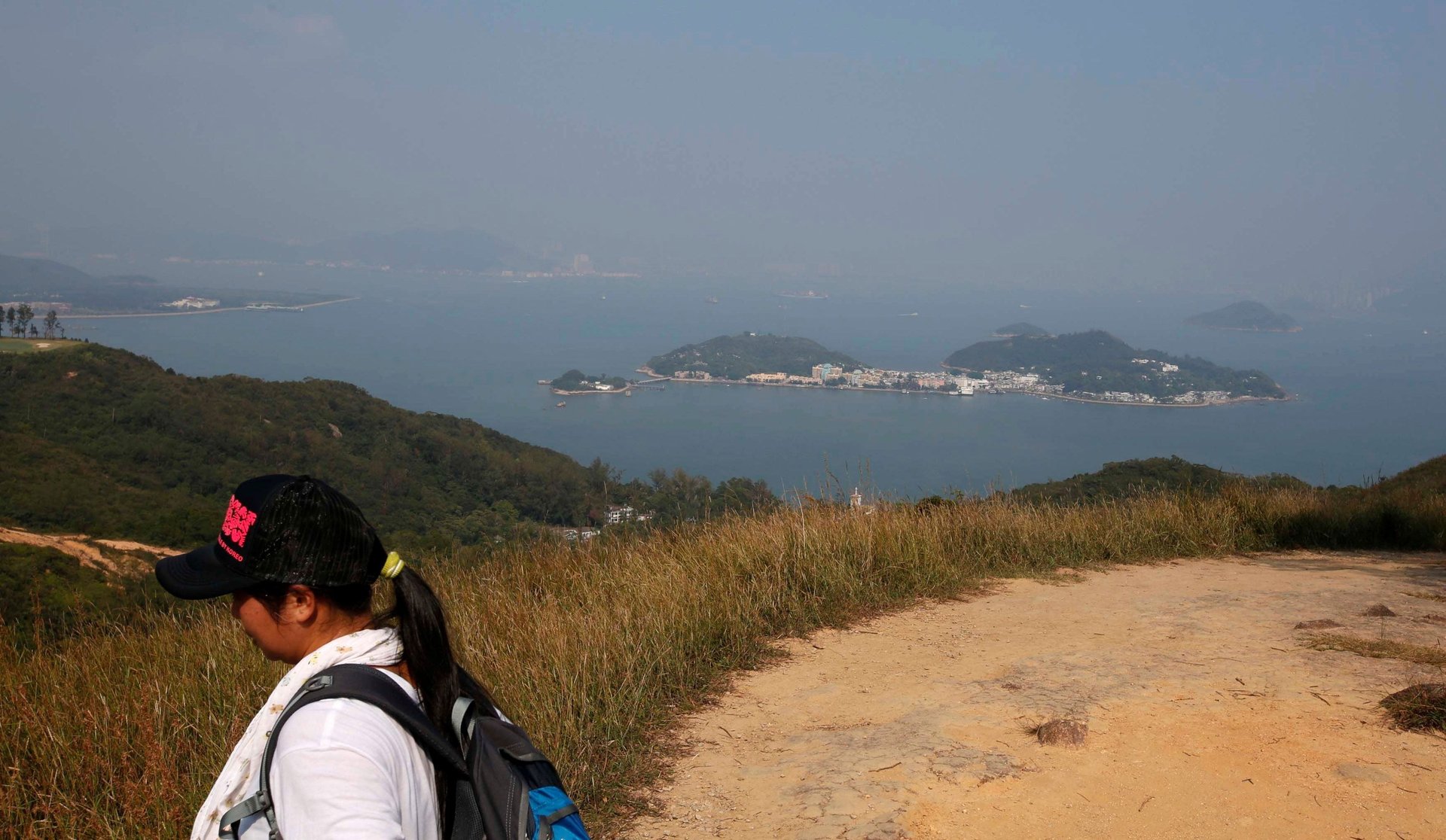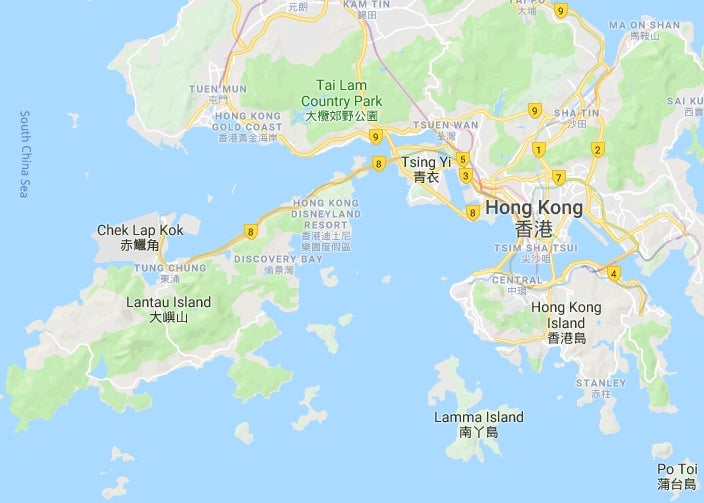Hong Kong is planning a $60 billion city in the sea nearly everyone opposes
Pesky environmentalists might say this isn’t the best time to build a gigantic new city in the sea—Hong Kong’s leaders would beg to disagree.


Pesky environmentalists might say this isn’t the best time to build a gigantic new city in the sea—Hong Kong’s leaders would beg to disagree.
The local government wants to build a series of costly artificial islands totaling 1,700 hectares (4,200 acres)—the largest engineering project it has ever attempted—to house up to 1.1 million people. This development is slated to take place on and around Hong Kong’s biggest island, Lantau, mostly made up of country parks. A precious green lung of mangroves and forested areas, Lantau is a reminder of another kind of Hong Kong life, free of the high-rises clustered together in more cramped parts of the city, and home to small villages that manage to linger on.
The project is slated to cost about HK$500 billion (US$60 billion)—about half of Hong Kong’s fiscal reserves of HK$1.1 trillion (US$140 billion)—if it doesn’t go over budget in its quest to make room for more businesses, recreational centers and other infrastructure. While the idea is not short of ambition, currently it lacks pretty much everything else—including public support.

“This is Hong Kong people’s money,” Jeremy Tam, a legislator of the opposition Civic Party, told Quartz. “Generations of Hong Kong people have built up healthy reserves. Which government puts more than half its total reserves into just one single project?” A poll conducted by Tam’s party found that 60% of respondents were worried the plan would exhaust the city’s reserves.
The proposal to expand on and around Lantau, a development plan long held dear by the Hong Kong government, has been floated vaguely since the mid-1980s. Then in 2014, the government came out with a project to reclaim 1,000 hectares near the island under the name East Lantau Metropolis, or ELM. A public consultation exercise was launched in 2016 after massive opposition to the idea, but the results of that exercise have not yet been made public.
Even so, in October, Hong Kong chief executive Carrie Lam announced in her annual policy speech that she’s going to push for the creation of ELM under the name Lantau Tomorrow Vision, now nearly double in size. Lam said the new land development is needed for both population increase, and “to thin out” dense areas in a city known for expensive, small flats. The government plans to seek funding in the new year for feasibility studies.
Lam described the future of Lantau as a “Double Gateway,” connecting Hong Kong via a new bridge to the southern mainland, where Chinese authorities are trying to develop an innovation hub called the Greater Bay Area (paywall) to rival San Francisco’s Bay Area (the other gateway is the international airport Lantau is home to).
A key backer of the development, a politically connected group called Our Hong Kong Foundation, has proposed to make the land reclamation even bigger, at 2,200 hectares (5,400 acres). The foundation is composed of pro-establishment politicians and business and real-estate tycoons, some of whom could end up benefiting directly from an enterprise of this nature. The foundation commissioned consulting firm McKinsey and others to research their plan, and announced in August that in the “best-case” scenario the first inhabitants could move into housing in 11 years.
While Hong Kong has often turned to reclamation in the past for housing, and to build the current airport and Hong Kong Disneyland, which is also located in Lantau, the scale of the ELM plan is something quite different.
Two days after the announcement, 6,000 people took to the streets to voice their disagreement. Former government workers called the plan “crazy,” while newspaper editorials questioned every point of the proposal. Pro-democracy parties, including the Civic Party, are canvassing to get 100,000 signatures against the plan in order to prompt more government debate over it.
There’s concern over the ecological impact of the reclamation work that would be involved, which would include putting massive quantities of cement and filler materials into the sea. It’s also unclear how the newly created islands would fare in the face of something like September’s typhoon Mangkhut, the strongest storm Hong Kong had seen in decades, or as rising sea levels make flooding more commonplace. Lantau’s also one of the very last habitats for endangered species like the pink dolphin, and the white-bellied sea eagle.
Tam, the legislator, points out that existing studies of the plan “have been considering a wave height of just 2 meters (7 feet), when the current waves during typhoons and the projections for the future are for waves of 10 meters and more.”
There is another, political, reason for opposition: Hong Kong’s population, now at 7.3 million inhabitants, is supposed to peak at 8.2 million in 25 years and then decline. Lantau’s own population is only about 100,000 right now, meaning the plan envisions a tenfold increase for the new metropolis, leaving people wondering if the new housing is intended to accommodate many more newcomers from the Chinese mainland.
Since its return under Chinese rule in 1997, Hong Kong has allowed up to 150 people from mainland China to settle in Hong Kong every day—a number that doesn’t include those who move here for work, study, or who gain residency through investment. The arrivals have been a source of friction, both in terms of competition for space and opportunities, as well as cultural differences.
The plans for the new project come as Lantau’s growing role as a gateway is already chipping away at its tranquility. The 55-kilometer (34 miles) sea bridge linking Hong Kong to mainland China and Macau opened in late October, and has brought thousands of day trippers to north Lantau on weekends.
The Lantau Tomorrow plan would make the island unrecognizable, warns Tom Yam, a member of the concern group Citizens Task Force on Land Resources, who has noted previously that “the scale of the development will make it impossible to preserve Lantau’s beaches, woodlands, wetlands, highlands, rural areas and villages.”
“There is no logical rationale that can explain this idea,” Yam told Quartz.